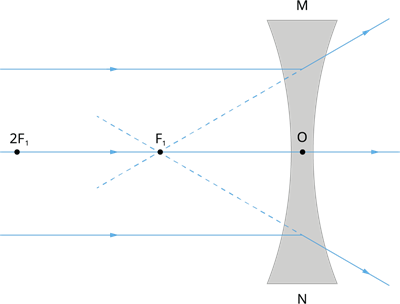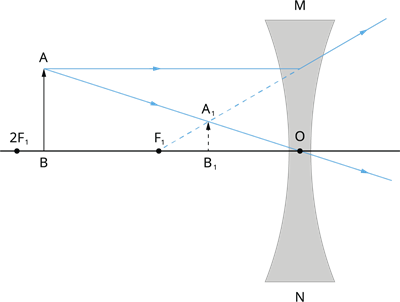PDF chapter test TRY NOW
Let us look at an activity to understand the concept of image formation by a concave lens.
- Take a concave lens and fix it up on a lens stand.
- On one side of the lens, place a lit candle.
- Examine the image through the lens from the other side. If at all possible, get the image on a screen. If not, look at the image through the lens directly.
- Make a note of the image's nature, relative size, and approximate location.
- Move the candle away from the lens. Note the change in the size of the image.
- When the candle is placed too far away from the lens, what happens to the image size?
Case 1: Object is at infinity

Object is at infinity
Case 2: Object is between infinity and the optical centre of the lens

Object is between infinity and optical centre
A concave lens will always give a virtual, erect and diminished image, irrespective of the position of the object.
The summary of the above activity is given in the below table.

